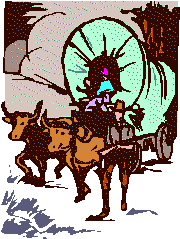What's an ox?
I read on Sarpy Sam's blog about some big steers, over 8 years old, that his dad rounded up when he bought the ranch. Sam said his dad had a hard time getting them in (in order to drive them to the train and send them to market.) I'm sure that the horses were a bit afraid of those big, wild steers!
The story of the big steers on the range reminded me of a couple of big Holstein steers we saw at the State Fair when I was a kid. I wasn't too big, so I may not remember right, but in my mind, those steers were at least six feet tall at the shoulder, and their heads were higher than that! The sign on their pen said they were 12 years old.
Those two steers surely weighed 2500 pounds each, or maybe more. That's a wild estimate, based on the weight of my dad's biggest Charolais bulls, years ago.
Last night, I happened upon this old-time photograph of four oxen hitched to a plow in eastern Kentucky. The oxen look like any ordinary cattle. I think they might be Shorthorns. (The photograph is part of the C. Frank Dunn collection which dates mainly from 1920 to 1940, with most photographs collected during 1928-1932.)
I began wondering exactly what distinguishes an ox from a big steer, and after some research today, I've learned the answer. It's training. Any cattle that are trained to work can be called oxen.
Many sources say an ox is a bull -- usually castrated, but not always. (A castrated bull is a steer.) Some make a distinction between a working steer (under 4 years old) and an ox (the same animal, over 4 years old.) Some sites emphasize that oxen can be either male or female.
 Many of the covered wagons in U.S. history were pulled by oxen, and some of the oxen were cows. Cows were favored because they provided milk along the way. At the new home, a cattle herd could be started if your ox was a cow.
Many of the covered wagons in U.S. history were pulled by oxen, and some of the oxen were cows. Cows were favored because they provided milk along the way. At the new home, a cattle herd could be started if your ox was a cow.Oxen could live on grass or even sagebrush along the trail. Horses and mules were pickier about what they ate and couldn't be depended on to swim streams or pull through deep mud like oxen.
According to an interesting British website about working with oxen, workhorses have strength and speed, but they pull in spurts. Oxen, however, pull long, hard, and steady. Two oxen can replace a big workhorse and it will cost less to keep them . Before tractors, oxen were the preferred animal to move heavy loads or to pull out a large vehicle that had become mired (even train cars that had left the tracks!)
Check out the great old photo of a big team of oxen at the link in the previous paragraph. The ox in the front looks old and thin. Perhaps he was placed in front because that position required less work, or maybe he was just a good leader.
Many of the old British cattle breeds were used as oxen, and of course, the same is true of all the old European breeds, including the breeds of large, muscular cattle that have become popular with beef producers in the U.S. during my lifetime -- Charolais, Gelbvieh, Limousin, Simmental, and others.
Interesting searches:
Oxen as draft animals
Oxen associations
No comments:
Post a Comment